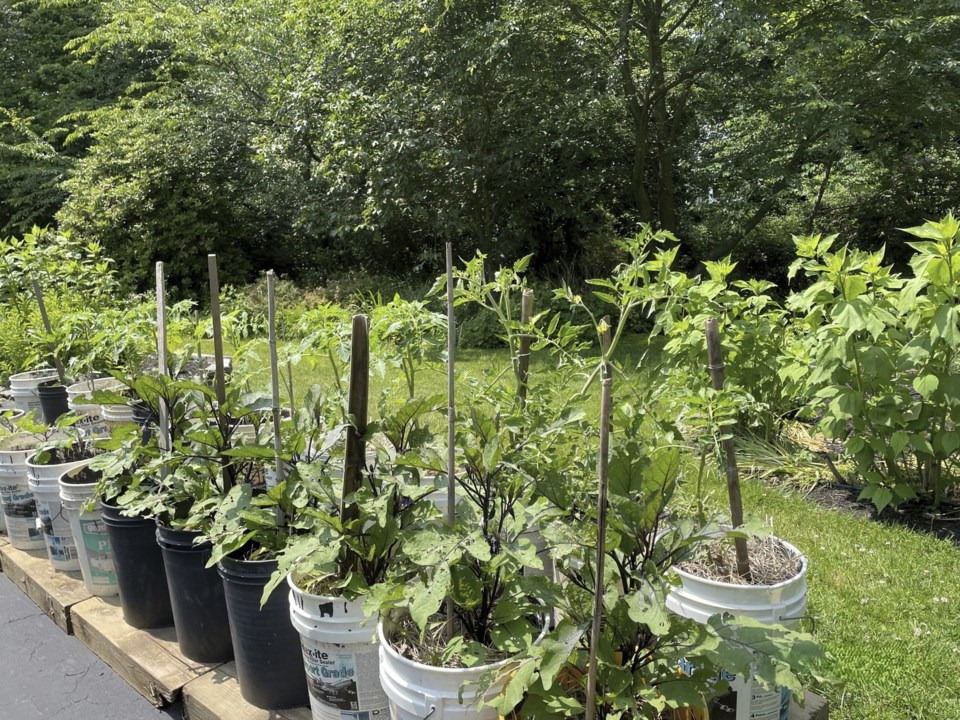When I was a kid, my aunt and uncle grew tomatoes in plastic buckets lined up like soldiers on the cement patio in their tiny Queens, New York, backyard.
They also grew dozens of vegetables in their 10-by-10 foot (3-by-3 meter) patch of soil and installed a pergola they made from green metal fence posts above a picnic table. While it provided much-needed shade, it more importantly supported grapevines that produced enough fruit for their annual homemade vintage.
Space — or the lack of it — doesn’t have to stand between you and a fruitful garden. You just have to be creative.
Start by looking up
Vertical space is a horizontally challenged gardener’s best friend.
String up a trellis, hang baskets or attach planters to a fence or wall. You might be surprised at how much you can grow when you consider the third dimension. Vines, herbs and even strawberries are content climbers or danglers.
Create visual interest by strategically grouping containers in clusters of odd numbers rather than lining them up in straight rows or placing them all separately. Try staggering their heights by perching them on decorative pedestals, overturned crates or stone slabs to draw the eye up and out.
Compact and colourful crops
Of course, size matters. If your space is limited, seek out compact or dwarf varieties of your favourite plants. They’ve been bred to thrive in tight spaces, and many are prolific producers of flowers, fruits or vegetables. These days, it’s easy to grow roses, blueberries, tomatoes, peppers — even apple and fig trees — in containers.
And don’t sleep on plants that multitask as both beautiful ornamentals and nutritious crops. I’ve grown amaranth, cherry tomatoes and rainbow chard in my perennial beds. Other edibles with attractive foliage or flowers like chives, fancy lettuces and sage would be equally at home among my coneflowers, zinnias and roses. And sweet potatoes make a nice ground cover or trailing vine in a mixed container.
Make the most of a single vegetable bed
If you have a small, designated bed for vegetables, you can maximize your yield by planting a succession of crops throughout the season. Start by planting early-maturing plants like peas, beets, kale and lettuces. Then, after harvesting, replace them with warm-season crops, such as tomatoes, peppers, summer squash and beans. As they fade and fall approaches, use the space for another round of cool-season plants.
Even a narrow strip or window box can feel lush if you plant it in layers. Place tall, upright plants in the back, midsized growers in the middle, and low bloomers in front to create visual depth that can help transform even a balcony or front stoop into your own personal nature retreat.
___
Jessica Damiano writes weekly gardening columns for the AP and publishes the award-winning Weekly Dirt Newsletter. You can sign up here for weekly gardening tips and advice.
___
For more AP gardening stories, go to https://apnews.com/hub/gardening.
Jessica Damiano, The Associated Press



